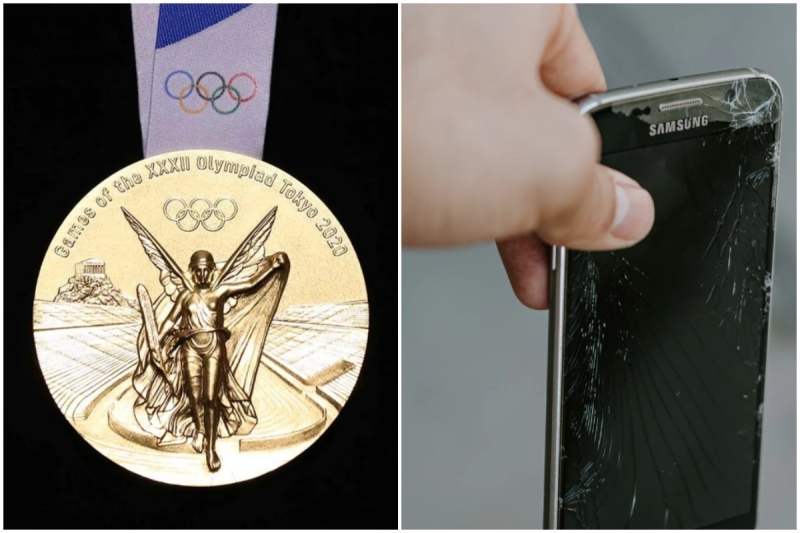I’m no Olympian. Although I must admit that I find those sparkling gold, silver, and bronze medals they use at the world-famous event mesmerising, to say the least. To my surprise, they’re not solely made of what we thought they were. In fact, they even happen to be (a lot) more environmentally friendly than what I could have ever imagined.
Like in past editions of the games between 2010 and 2016, the Olympics 2020 medals consist of recycled materials. Specifically, disposed electronics or e-waste donated by Japanese citizens in an effort to make the global sporting occasion as sustainable as it can be. But unlike the former, which only used small amounts of e-waste for each token, the 2020 medals are made up entirely of them!
Also read: Charging Phones Is Among Many Durian Benefits You Might Not Know
What kinds of e-waste are Olympics 2020 medals made from?
According to the Olympics, the recycled medals were built from approximately 78,985 tons worth of used small electronics. Of these, 6.21 million are used mobile phones. The others are digital cameras, handheld games, and laptops. The initiative was made possible by the Tokyo 2020 Medal Project, which launched donation boxes for Japanese citizens to put their old devices in.

Image credit: (L-R) Olympics; Ashkan Forouzani
With the help of local governments in Japan, the boxes were placed at common spaces all over the country. These include key streets and post offices. The project likewise gained the support of educational institutions, electronics retail chains, and other Japan stores. This collective effort, participated by 1,621 Japanese municipalities, paved the way for the project to gain the needed amount of electronics in the span of two years.
Upon collection, the e-waste underwent a process of classification, dismantling, and smelting by trained contractors. The procedure accumulated at least 32kg of gold, 3,500kg of silver, and 2,200kg of bronze. They were subsequently used to produce the final Olympics 2020 medals. Their designs likewise came from Japanese professional designer Junichi Kawanishi after a nationwide competition.
Also read: In-Flight Meal Skip Option Is Japan’s Next Step Toward Sustainability
There are 5,000 recycled medals in the Olympics 2020 medals, and it’s great to know that their bearers aren’t the only ones who will benefit from them. With e-waste growing, Tokyo 2020 has shown that it’s possible to have more games in the future that are more sustainable. And that, like the Japanese, fans can do more than be spectators — they could also be catalysts for change.
Featured image credit: Olympics | Official Website




